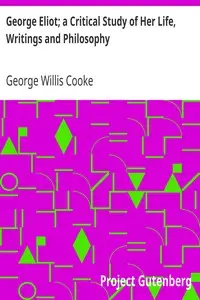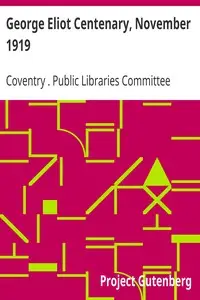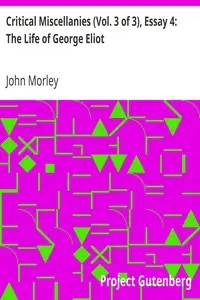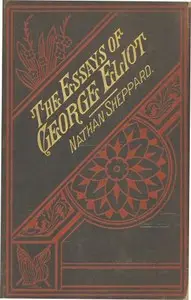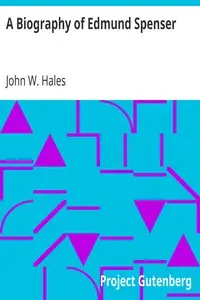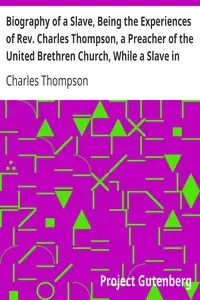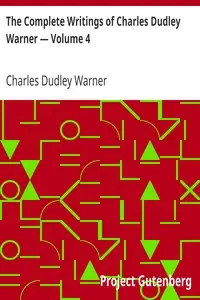"George Eliot's Life, as Related in Her Letters and Journals. Vol. 3 (of 3)" by George Eliot is a window into the author's world through her own words, capturing her experiences, intellectual pursuits, and relationships in the latter part of the 1800s. The letters and journal entries paint a picture of her adventures abroad, like her travels in Spain with her partner, where she soaks in the culture and landscapes, which fuel her creativity and philosophical ponderings. Readers witness the genesis of her literary works, such as her poem "The Spanish Gypsy," all while following her reflections on society. This volume captures a life of exploration, thought, and creation, highlighting the intricate link between Eliot's life and her celebrated literary legacy.

George Eliot's Life, as Related in Her Letters and Journals. Vol. 3 (of 3)
By George Eliot
Embark on a journey through the mind of a literary giant as revealed through her personal letters, where travel ignites her creativity and reflections on society shape her timeless stories.
Summary
About the AuthorMary Ann Evans, known by her pen name George Eliot, was an English novelist, poet, journalist, translator, and one of the leading writers of the Victorian era. She wrote seven novels: Adam Bede (1859), The Mill on the Floss (1860), Silas Marner (1861), Romola (1862–1863), Felix Holt, the Radical (1866), Middlemarch (1871–1872) and Daniel Deronda (1876). As with Charles Dickens and Thomas Hardy, she emerged from provincial England; most of her works are set there. Her works are known for their realism, psychological insight, sense of place and detailed depiction of the countryside. Middlemarch was described by the novelist Virginia Woolf as "one of the few English novels written for grown-up people" and by Martin Amis and Julian Barnes as the greatest novel in the English language.
Mary Ann Evans, known by her pen name George Eliot, was an English novelist, poet, journalist, translator, and one of the leading writers of the Victorian era. She wrote seven novels: Adam Bede (1859), The Mill on the Floss (1860), Silas Marner (1861), Romola (1862–1863), Felix Holt, the Radical (1866), Middlemarch (1871–1872) and Daniel Deronda (1876). As with Charles Dickens and Thomas Hardy, she emerged from provincial England; most of her works are set there. Her works are known for their realism, psychological insight, sense of place and detailed depiction of the countryside. Middlemarch was described by the novelist Virginia Woolf as "one of the few English novels written for grown-up people" and by Martin Amis and Julian Barnes as the greatest novel in the English language.



